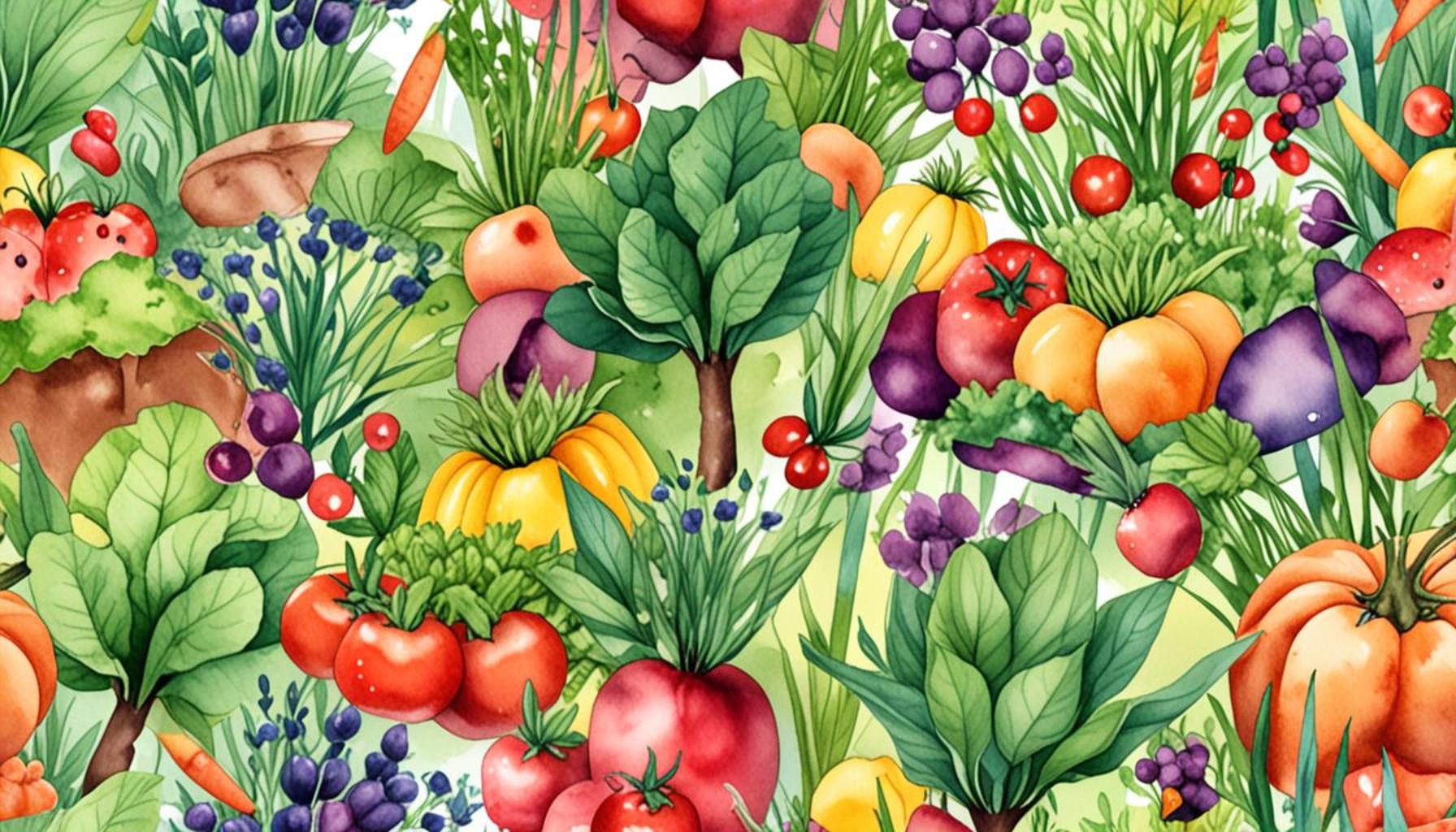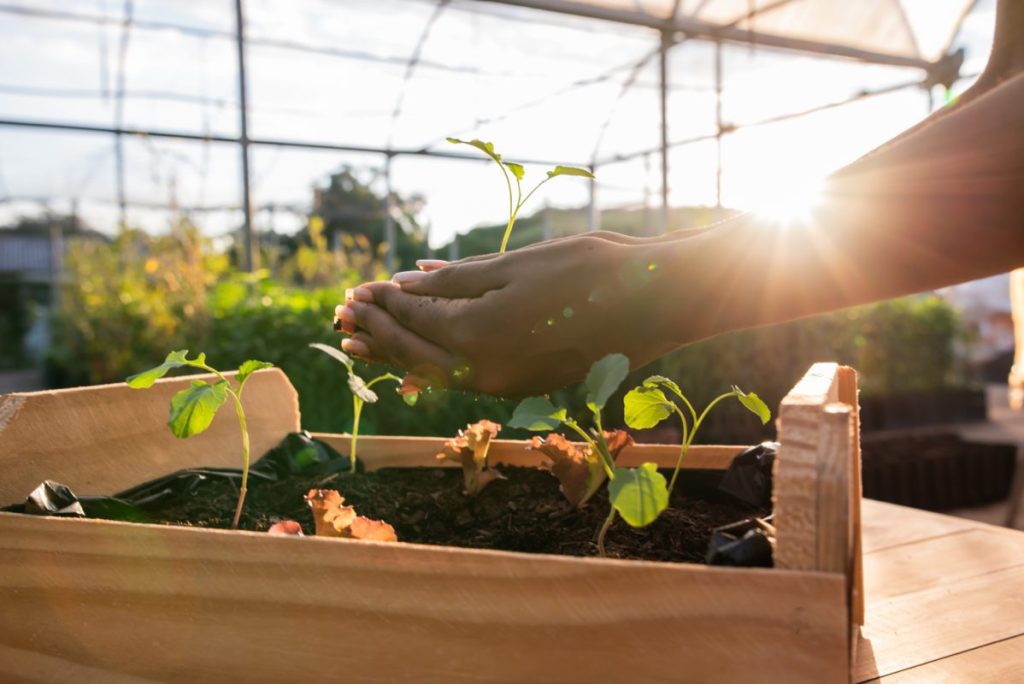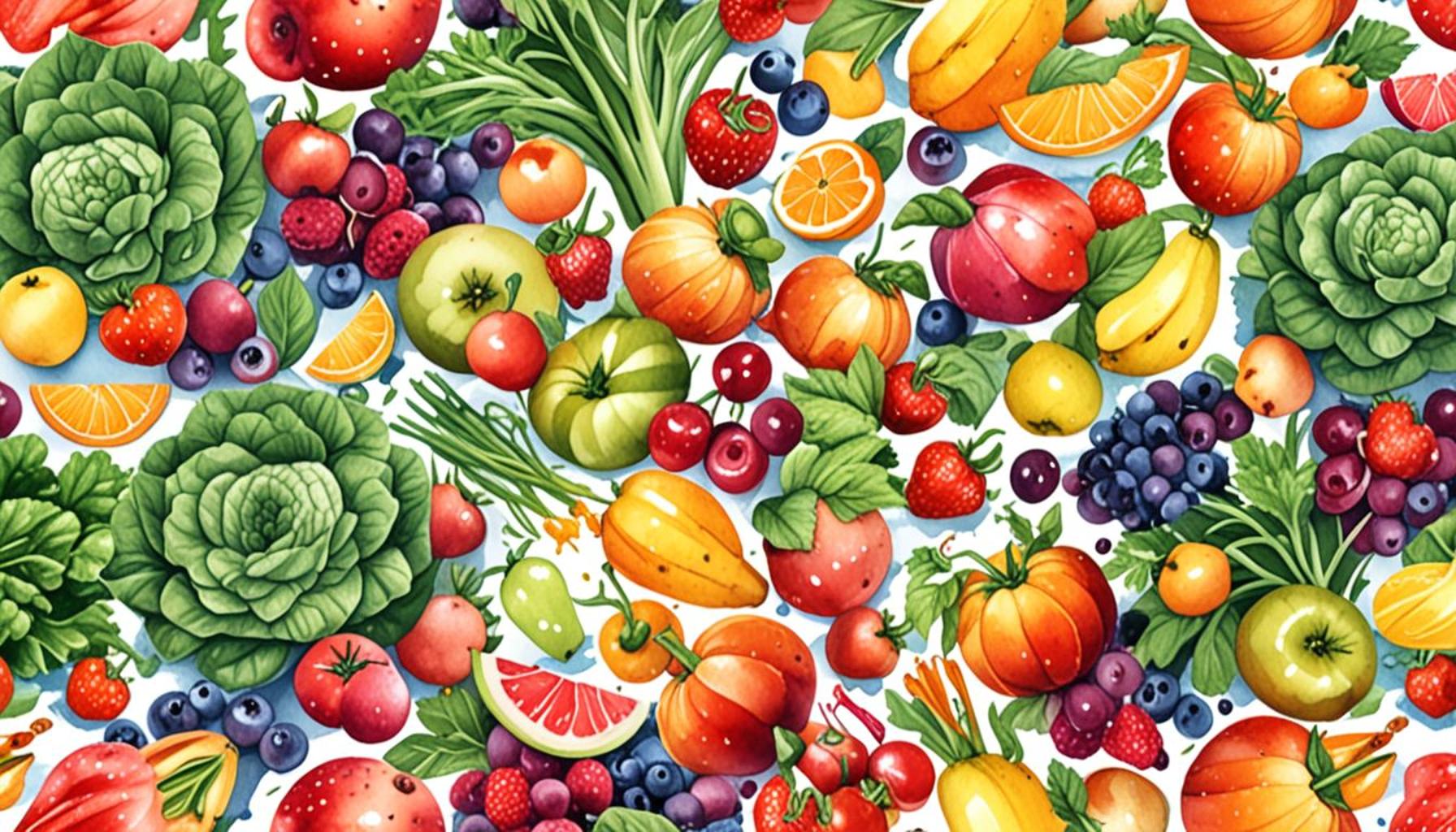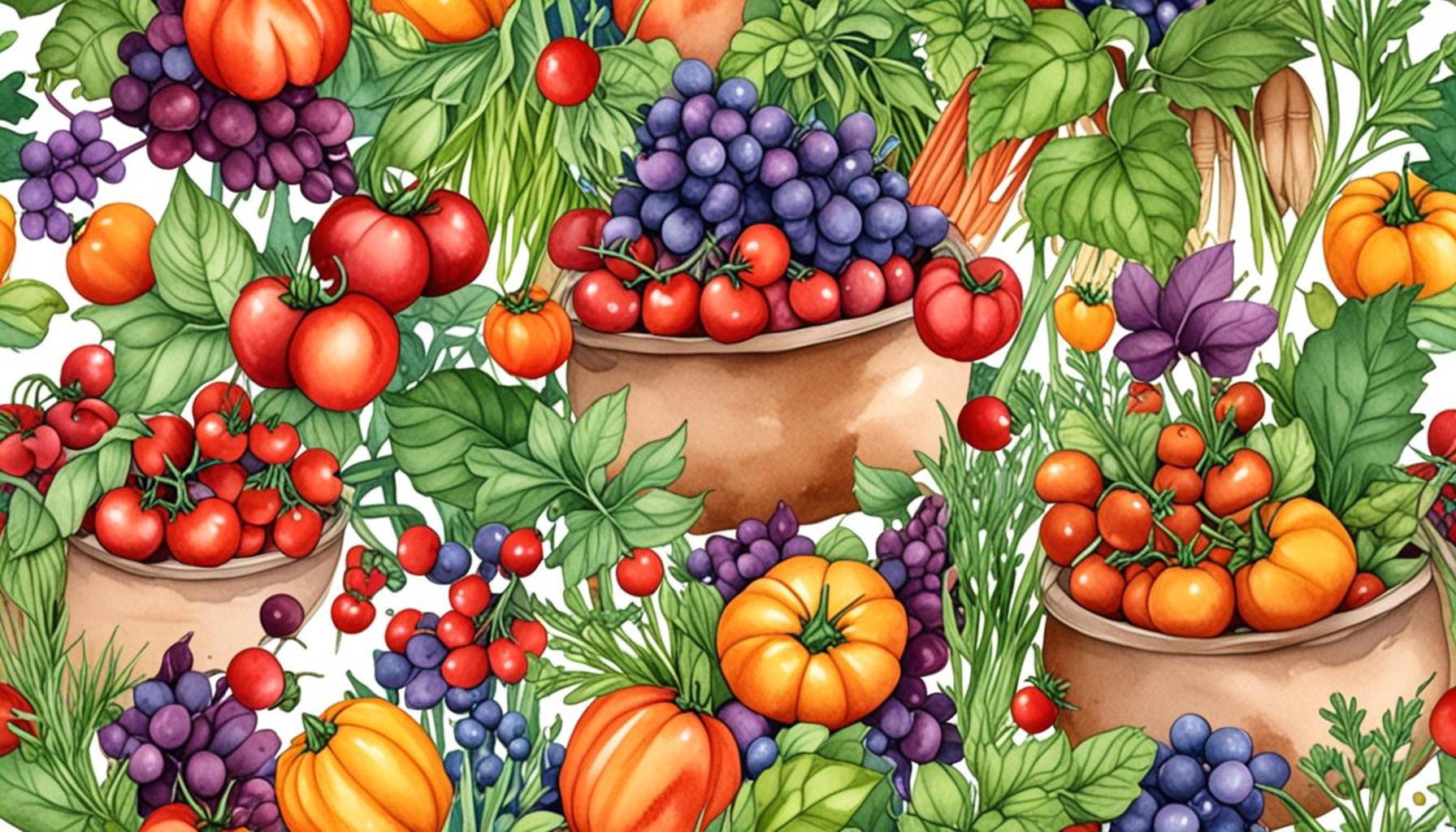Sustainable Harvest: Ecological Practices to Ensure a Sustainable Garden

Creating a Thriving, Eco-Friendly Garden
As the challenges of climate change continue to escalate, individuals and communities are seeking innovative ways to mitigate its effects. One of the most compelling avenues is through gardening that emphasizes sustainable harvest practices. By integrating ecological strategies into our gardening routines, we not only foster biodiversity and improve soil health, but we also cultivate gardens that flourish while coexisting with nature.
Implementing sustainable practices can significantly transform your gardening experience. Here are several practical techniques to consider:
- Companion planting: This age-old technique involves placing different crops in proximity to one another to naturally deter pests and enhance growth. For example, planting marigolds alongside tomatoes can repel nematodes and attract beneficial insects, while herbs like basil can improve the flavor and health of neighboring plants.
- Organic composting: Transforming kitchen scraps such as vegetable peels and eggshells, along with yard waste like grass clippings and leaves, into compost enriches the soil with nutrients. This organic material fosters microbial life and enhances soil structure, reducing reliance on chemical fertilizers that can be harmful to both the environment and human health.
- Water conservation: With water scarcity being a growing concern, employing techniques such as rainwater harvesting can be extremely beneficial. By collecting rain in barrels and using drip irrigation systems, you can ensure efficient water use during dry spells, minimizing waste and optimizing resource management.
Beyond the technical aspects, embracing these ecological practices offers a multitude of benefits that extend to quality of life and community wellness.
- Preservation of local wildlife: Creating a habitat that supports pollinators such as bees and butterflies helps maintain ecological balance. By incorporating native plants in your garden, you can attract these essential species, which are crucial for the pollination of many crops.
- Enhanced soil fertility: Healthy soil teems with life and leads to more nutritious crops. Practices like crop rotation further enhance soil health by preventing nutrient depletion and reducing pest cycles. This ensures a vibrant and productive garden free from harmful chemicals.
- Community engagement: Sustainable gardening can serve as a fantastic vehicle for fostering connections within your community. Organizing gardening workshops or sharing resources may inspire neighbors to adopt similar practices, promoting a local culture of sustainability that benefits everyone.
Exploring sustainable harvesting is not just an eco-conscious choice; it’s a journey into the art of responsible gardening. As you probe deeper into these methods, you’ll uncover the vital role your garden plays not only in your lifestyle but also in the well-being of our planet. Gardening becomes not only a means of sustenance but a form of activism that contributes toward a greener future, urging us all to cultivate a better relationship with our environment.
DISCOVER MORE: Click here for helpful tips

Nurturing Your Garden with Ecological Wisdom
The journey towards a sustainable garden begins with understanding the interconnectedness of all elements within the ecosystem. Each choice made in the garden impacts not just the immediate surroundings but also the broader environment. By adopting sustainable harvest practices, gardeners can create a harmonious balance that promotes biodiversity and resilience against climate fluctuations.
One fundamental aspect of sustainable gardening is the use of native plants. Native species are well-adapted to local climates and soil conditions, requiring less water and fewer resources to thrive compared to exotic plants. Additionally, they serve as crucial food sources for local wildlife, creating bustling microhabitats that enhance biodiversity. For instance, native wildflowers not only beautify your garden but also provide nectar for native pollinators, ensuring healthy cross-pollination for fruits and vegetables. Incorporating these plants can be a transformative step toward a sustainable garden.
Soil Health and Microbial Life
Another cornerstone of sustainable harvest practices is the promotion of soil health. Healthy soil is alive with microorganisms that facilitate nutrient cycling and plant growth. One effective way to enrich the soil is through cover cropping, which involves planting crops like clover or vetch during the off-season. These cover crops improve soil structure, prevent erosion, and suppress weeds while adding nitrogen back into the soil when tilled under. This natural approach not only helps in maintaining a balanced ecosystem but also minimizes the need for chemical fertilizers that can contaminate water sources.
In addition to cover cropping, implementing mulching techniques can significantly benefit your garden. Mulch helps retain moisture, suppress weeds, and add organic matter to the soil as it breaks down. By utilizing locally-sourced materials like grass clippings, straw, or shredded leaves, you contribute to a closed-loop system, reducing waste and promoting regenerative practices.
Integrated Pest Management
To protect your garden from pests while minimizing the use of harmful chemicals, consider adopting integrated pest management (IPM). This holistic approach emphasizes understanding pest behavior and lifecycle, allowing gardeners to utilize natural predators and environmentally friendly deterrents. For instance, introducing beneficial insects, such as ladybugs and lacewings, can help manage aphid populations without resorting to pesticide use. Additionally, organisms like nematodes can control soil-borne pests, providing a sustainable solution to pest management.
- Encourage biodiversity: Plant a diverse range of species to create habitats for various beneficial insects and wildlife.
- Regular monitoring: Keep track of pest populations and plant health to implement timely, targeted interventions.
- Utilize barriers: Employ physical barriers like row covers to protect your crops from pests while allowing beneficial insects to thrive.
Integrating these practices into your gardening routine not only enhances crop quality and yields but also nurtures a healthy ecosystem. Understanding and respecting the natural processes will ultimately lead you toward achieving a sustainable garden that benefits both you and the environment. As we cultivate these ecological practices, we embrace the notion that a sustainable harvest is a pathway toward nurturing the planet and fostering resilience for future generations.
| Category | Description |
|---|---|
| Organic Soil Management | Utilizing compost and natural amendments to improve soil fertility, promoting healthier plants. |
| Local Biodiversity | Encouraging a diverse range of plant species can enhance ecosystem resilience and attract beneficial insects. |
| Water Conservation Techniques | Implementing practices like drip irrigation and rainwater harvesting to ensure efficient water use. |
| Permaculture Design | Creating sustainable and self-sufficient ecosystems by designing gardens that incorporate natural patterns. |
| Pest Management | Utilizing natural predators and organic solutions to minimize pest outbreaks and reduce chemical use. |
Ecological practices are essential in achieving a sustainable garden. By focusing on organic soil management, gardeners can significantly enhance their soil’s health, which in turn fosters vigorous plant growth. Equally important is local biodiversity; including various plant species not only supports wildlife but also strengthens the garden’s defenses against pests.In addition, implementing water conservation techniques can dramatically lower water usage, ensuring sustainable growth even in arid conditions. Techniques like drip irrigation or utilizing rainwater can dramatically increase efficiency. Meanwhile, embracing permaculture design helps create a system that works with nature rather than against it, efficiently recycling nutrients and energy.Lastly, integrated pest management strategies can help maintain a balanced ecosystem, protecting crops while minimizing the reliance on chemical pesticides. Delving into these ecological practices can yield gardens that are not only productive but also environmentally friendly and resilient.
DISCOVER MORE: Click here for insights on soil health practices
Water Conservation Techniques
Water is an essential element of gardening, yet it remains a precious resource often taken for granted. Implementing water conservation techniques is crucial for sustainable harvesting and responsible gardening. One effective strategy is the establishment of a rainwater harvesting system. By collecting rainwater runoff from roofs through gutters and directing it into barrels or cisterns, gardeners can utilize this clean water source to irrigate their gardens, reducing reliance on municipal water supply. This technique not only ensures that plants receive adequate moisture during drier periods but also mitigates stormwater runoff that can lead to erosion and water contamination.
Additionally, adopting drip irrigation can optimize water usage during watering sessions. Unlike traditional sprinkler systems, drip irrigation delivers water directly to the plant roots in a controlled manner, reducing evaporation and runoff. This method is particularly beneficial in areas that experience drought conditions, allowing for precise management of water resources while promoting healthy plant growth. Integrating these water-saving practices effectively supports a sustainable garden, especially in states like California, where water scarcity is increasingly becoming a pressing issue.
Composting for Nutrient-Rich Soil
Another vital component of sustainable gardening is composting. By recycling organic kitchen scraps, yard waste, and other biodegradable materials, gardeners can create nutrient-rich compost that enhances soil fertility. Composting not only diverts waste from landfills but also promotes soil health by providing essential nutrients and stimulating microbial life. For example, adding compost to your garden beds can improve soil structure, enhance moisture retention, and bolster overall plant health.
Gardeners can choose between various composting methods, including traditional pile composting, vermicomposting (using worms), and bokashi fermentation. Each method has its unique advantages, allowing gardeners to select the approach that best fits their needs. For instance, vermicomposting is an efficient method for indoor gardeners or those with smaller spaces, while traditional pile composting can accommodate large quantities of organic waste. By embracing composting, individuals engage in a sustainable practice that closes the nutrient loop and fosters a healthier garden ecosystem.
Permaculture Principles
Permaculture is a design philosophy that mimics natural ecosystems to create self-sustaining agricultural systems. By applying permaculture principles, gardeners can enhance the resilience and productivity of their gardens. This holistic approach emphasizes design elements such as zones, sectors, and patterns, which can lead to efficient resource management and minimal waste. For instance, creating a food forest—a layered garden that incorporates trees, shrubs, and ground covers—provides food, habitat, and ecological benefits while minimizing maintenance and resource input.
- Zone Planning: Divide your garden into zones based on how frequently you need access, placing commonly used plants nearer for convenience.
- Plant Companion Species: Select plants that mutually benefit one another, such as combining nitrogen-fixing plants with heavy feeders.
- Wildlife Integration: Include elements like birdhouses, bee hotels, and insectary strips to attract beneficial wildlife that supports pollination and pest control.
By adopting permaculture practices, you cultivate a garden that not only nourishes you but also contributes positively to the wider ecological community. The principles of permaculture invite gardeners to think creatively about resource use, efficiency, and the broader impact of their gardening choices.
DIVE DEEPER: Click here to learn about water reuse in gardening
Conclusion
In wrapping up our exploration of sustainable harvest and ecological practices for gardening, it is evident that the path to achieving a thriving garden goes hand-in-hand with a commitment to environmental stewardship. By implementing vital strategies such as water conservation techniques, composting, and permaculture principles, gardeners not only cultivate healthy plants but also foster a healthier ecosystem for future generations.
The significance of water conservation cannot be overstated, especially in an era marked by climate change and increased drought occurrence across the United States. The adoption of practices like rainwater harvesting and drip irrigation showcases how small changes in irrigation methods can yield substantial benefits for both the garden and the broader environment.
Incorporating composting into the gardening routine encourages the recycling of organic waste, transforming what would typically be discarded into a resource that nourishes soil. This not only reduces landfill contributions but also enhances soil structure and fertility, creating a vibrant environment for plant life.
Furthermore, the application of permaculture principles allows for the design of sustainable, self-sufficient gardens that are less dependent on external resources. This approach respects natural ecosystems, creating symbiotic relationships within the garden that contribute to long-term sustainability.
As gardeners, embracing these practices empowers us with the knowledge and tools necessary to engage in sustainable gardening. By taking action, we can create gardens that nourish us while promoting ecological balance, ultimately paving the way for a future where nature and cultivation coexist harmoniously. The journey towards a sustainable garden is not just beneficial for us as individuals; it plays a crucial role in caring for our planet.



